
Musculoskeletal Biomechanics Lab
Building Informative Open-source Models, Examining Complex Human Activities, & Navigating Interpretation of Computer Simulations
Research
Vision Statement: To create predictive, biomechanical models that will improve the functional ability and quality of life of individuals with musculoskeletal disorders.
The vision, mission, and values that guide our research and our lab culture are described further in the Musculoskeletal Biomechanics Lab Guidebook.
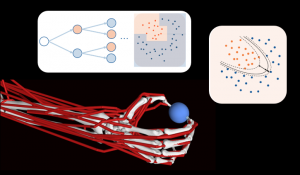
Personalized Musculoskeletal Models via Machine Learning
The wrist and hand are one of the most complex joint systems in the human body. Computer simulations of hand function involve hundreds of interdependent parameters. We are leveraging recent advances in machine learning to rapidly create subject-specific musculoskeletal models. This work also aims to enhance analyses of complex, multi-dimensional, biomechanical simulation data sets.
Project Lead: Jennifer Nichols, Ph.D.
Collaborator: Joel Harley, Ph.D.
Current Funding: “A Transfer Learning Framework for Creating Subject-Specific Musculoskeletal Models of the Hand” (R21 EB030068, NIH NIBIB Trailblazer R21 Award)
Past Funding: “Learning Thumb Biomechanics from Large Simulation Datasets” (2019 Outstanding Researcher Award, NIH NCSRR Pilot Project)
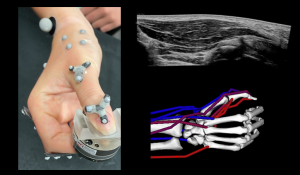
Thumb Osteoarthritis
Carpometacarpal osteoarthritis (CMC OA) is a disabling disease marked by pain and functional loss of the thumb. We are studying how joint degeneration, pain, and movement contribute to symptoms of this disease. This work integrates medical imaging (e.g., ultrasound), human movement biomechanics (e.g., motion capture and electromyography), and quantitative experimental pain measurements (e.g., quantitative sensory testing and movement-evoked pain).
Project Lead: Jennifer Nichols, Ph.D.
Collaborators: Yenisel Cruz-Almeida, M.S.P.H., Ph.D.; Thomas Wright, M.D.; Terrie Vasilopoulos, Ph.D.
Current Funding: “Carpometacarpal Osteoarthritis: Understanding the Intersection of Muscle Mechanics, Joint Instability, and Pain” (NIH NIAMS R01 AR078817)
Past Funding: “Carpometacarpal Osteoarthritis: Towards Identification of Biomechanical, Neuromuscular, and Somatosensory Mechanisms” (CTSI NIH KL2 Scholar Program)
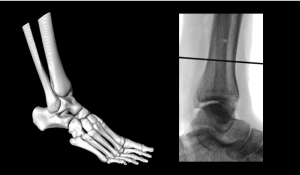
Ankle Syndesmosis
Ankle syndesmosis injuries occur when the ligamentous connection between the distal tibia and fibula is damaged. We are examining how patient- and surgeon-specific factors influence clinical outcomes and ankle health. On the patient side, we are evaluating the relationship between tibiofibular alignment and patient-reported outcomes. On the surgeon side, we are designing and assessing surgical techniques. This work involves gait analysis, image processing, and eye-tracking. Aspects of this work are protected by a provisional patent application.
Project Leads: Jennifer Nichols, Ph.D. and Christopher W. Reb, D.O.
Current Funding: Working on it!
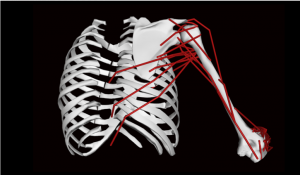
Rotator Cuff Tears
Shoulder pathologies, such as rotator cuff tears, are a common source of pain and workplace injury. We are studying how movement and muscle activity change in the presence of symptomatic and asymptomatic injury. This work involves motion analysis, electromyography, ultrasound imaging, and dynamometry.
Project Lead: Federico Pozzi, P.T., Ph.D.
Clinical Collaborator: Jay King, M.D.
Funding: Working on it!
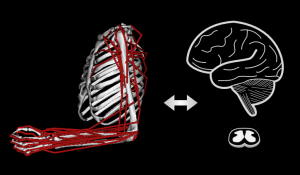
Elucidating Sensoriomotor Control via Deep Learning
The centering question of this research is “how do distributed neural circuits drive purposeful movement from the musculoskeletal system?” We are specifically working to develop biologically-inspired data-driven artificial intelligence methods to elucidate the principles of the neural control of movement.
Project Lead: Shreya Saxena, Ph.D.
Current Funding: “Elucidating Principles of Sensoriomotor Control Using Deep Learning” (NIH NIDA, BRAIN Initiative R01 DA056377)
© 2017-2023 Dr. Jennifer A. Nichols at the University of Florida